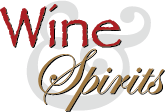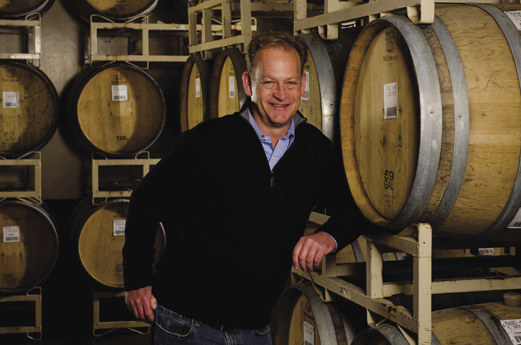- Home
- Media Kit
- Current Issue
- Past Issues
- Ad Specs-Submission
- Ad Print Settings
- Reprints (PDF)
- Photo Specifications (PDF)
- Contact Us

![]()
ONLINE


Greg Stach
The Landmark Reputation
Editors’ Note
Greg Stach’s winemaking philosophy couples traditional winemaking techniques with a “less is more” attitude. Under his direction, Landmark’s wines have consistently earned stellar reviews from top wine critics, including six honorable appearances on the Wine Spectator’s Top 100 list. Landmark’s signature wine, Overlook Chardonnay, incorporates a blending technique, perfected by Stach, with over 20 different vineyards, making Landmark a California Chardonnay “negociant.” Stach is also recognized for creating some of the best single vineyard designate Pinot Noirs of the decade and helping establish Landmark’s distinguished Pinot Noir program. A graduate of California State University at Fresno with a degree in journalism, Stach didn’t discover his true passion for wine until the mid-1980s while working as a restaurant sommelier. He then returned to school and earned a degree in enology from Fresno State, graduating in 2001.
Winery Brief
Landmark Vineyards (www.landmarkwine.com) was founded in Sonoma County in 1974. In 1989, John Deere’s great great-granddaughter, Damaris Deere Ford, relocated Landmark Vineyards to a piece of land at the base of Sugarloaf Mountain in the Sonoma Valley, where she built a Spanish mission-style winery equipped with state-of-the-art winemaking equipment capable of producing 20,000 cases of wine per year. Ford’s son, Michael Deere Colhoun, and his wife Mary moved from the east coast to join her as partners in the winery. In 1993, the Colhouns hired world-renowned consulting enologist Helen Turley to work with winemaker Eric Stern. Landmark’s wines may be purchased via select wine shops and restaurants, or directly from Landmark’s Tasting Room, online store, or through membership in the Heritage Wine Society wine club.
Even with your focus on Chardonnay, how tough is it to differentiate in the wine space?
We have an advantage now because the Landmark Vineyards brand has been established for almost 20 years and people know us for quality.
There is a real fight for shelf space or getting in front of wine buyers to try the wines. When I do marketing, if I do it in a restaurant that hasn’t tried Landmark in a long time, they know the reputation we have and remember the wine as being of high quality, and in the wine world, that’s a huge advantage.

Landmark Vineyards
Has the way you produce wines changed with technology?
There has been an evolution but the fundamentals are the same with our Chardonnay: it’s all native yeast fermented, which means the wild yeast in the atmosphere; all whole cluster press; all malolactic fermentation (ML); and not filtered into the bottle. That said, it’s a slow evolution and we’re constantly trying to improve the winemaking, so in that broader framework, we have gotten better at what we do over the years.
How have your distribution channels evolved and are you happy with them?
I am. We just went through the big distribution change. With so many brands out there, distribution and working with your distributors is key because they are the ones who sell the wine.
The President of the company said that when it comes to our distributors, we stand in front of them, beside them, and behind them. Of course, we would like them to sell more wine, but we’re also beside them in the marketplace and willing to do whatever it takes to help them.
How can you offer a quality product at such a reasonable price point?
It’s about great sourcing and finding really good grapes. At Landmark, most of the vineyards we work with are ones we’ve worked with for a very long time, and we’re always scouting for vineyards – that is the key. Maybe for the Overlook program, we’ll find a vineyard that is producing fantastic wine but isn’t as well-known as some other vineyards.
That said, there are a lot of vineyard designate wines from other wineries that go into the Overlook Chardonnay. We buy grapes and they will go into the Overlook where other people will buy the same grapes and they will go into their reserve program.

Landmark Vineyards
Overlook Chardonnay
What does blending consist of?
With the Chardonnay blending, we purchase fruit from 25 different Chardonnay vineyards across the state. With blending, you can create something that is greater than the sum of its parts; there is a synergy that happens and that is what we’re looking for – where one vineyard will blend with another vineyard and both will be better for it.
At what stage of production do you know what the end result is going to be?
We have about 46 Chardonnay lots this year and every section in a vineyard is picked individually; the wines are then made individually in barrel. It’s in the Spring that we start blending and know what we’re going to get. Especially with Chardonnay, it’s tougher to know what you’ve got until it completes ML and that generally doesn’t finish until then.
What were you trying to convey with the new look of the label?
The new hand-calligraphy label better reflects Landmark’s handcrafted, time intensive dedication to producing exceptional wines that stand out from the rest. We have been successful in conveying that we are still a very small artisan winery and the scripting on the label emphasizes that. I love it for its simplicity – it reflects the simplicity of our winemaking.
Do you take time to appreciate a great vintage or is it always about what’s next?
You know that the vintages are great while you’re picking the grapes because the weather is perfect. Sometimes in winemaking, Mother Nature makes choices for you, but in great vintages, you can make all of the choices yourself so you really know.
What’s amazing to me is that, when I find a wine I like, it’s incredible for me to think that I made it.
How have you developed the winery and has it become a destination for visitors?
Landmark is in Sonoma Valley at the base of Sugarloaf State Park right off Highway 12. On the weekends, Landmark offers private tours and educational tasting seminars, as well as beautiful picnic grounds with a Bocce Ball court and overnight accommodations where guests can stay on property. New this year, patrons can attend blending seminars and make their very own Chardonnay Cuvée. While the property is a leading destination spot in Sonoma Valley, we believe it’s our long-standing reputation for quality wines that ultimately brings consumers to the estate.•